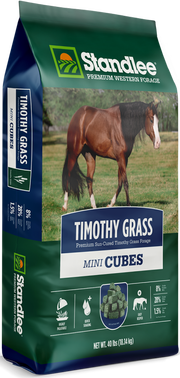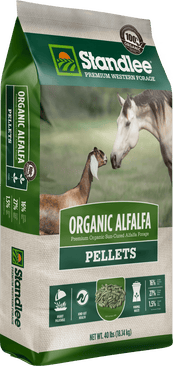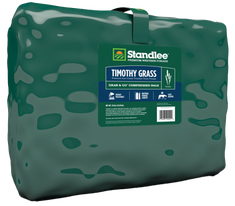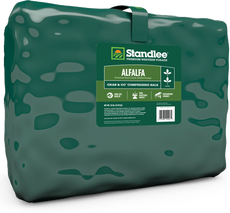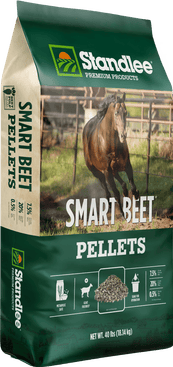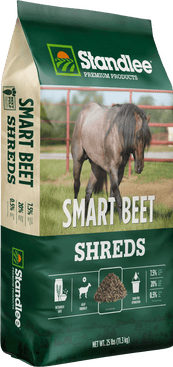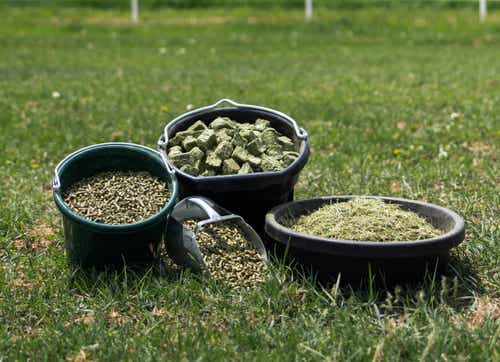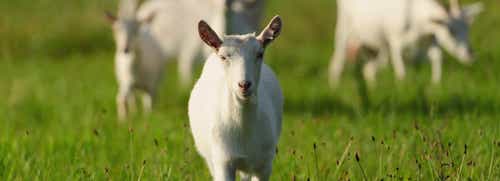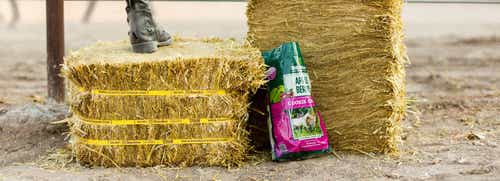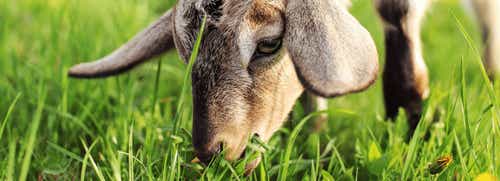
Feeding Goats in Winter: Smart Forage & Nutrition Strategies for Cold Weather
When cold weather arrives and pastures fade, goats face new nutritional challenges. Shorter days, frozen ground, and lower temperatures mean less grazing time – and a greater need for energy, fiber, and warmth from their feed.
Winter feeding isn’t just about keeping goats full. It’s about helping them stay healthy, maintain body condition, and generate the internal heat they need to thrive all season long.
Here are key forage and feeding strategies to support your goats’ health, energy, and comfort through the winter months.
Forage Selection & Quality: What Works Best in Winter
Dry, High-Quality Hay for Goats
During the cold months, dry, well-cured hay or baled forage ensures consistent nutrition. Look for clean, mold-free forage with good leaf content and no dust buildup. Premium compressed bales, such as Standlee Grab & Go® Compressed Bales, provide a convenient, consistent option with high nutrient retention.
We also recommend adding Smart Beet to your dairy goat rations for added fiber.
Grass Hay
Grass hays, such as Timothy or Orchard Grass, provide the high fiber goats need for rumen health and warmth. They’re a great choice for maintenance diets for goats or goats in early pregnancy. These forages are lower in protein and sugar than alfalfa, helping prevent unwanted weight gain and metabolic stress while still supplying digestible fiber.
Alfalfa & Alfalfa/Grass Mixes
Early to mid-winter is a time when does should be in early pregnancy. Begin increasing the nutritional level of a pregnant doe's diet about six weeks before kidding, so that by the time kidding occurs, she is at the level of nutrition that she needs for lactation. When lactation starts, the protein requirement of a goat more than doubles. Just feeding a grain to help with energy is not enough, milk formation requires protein.
Alfalfa is the only hay with enough protein to meet the needs of a lactating doe. However, the producer must carefully and slowly increase the protein intake of a pregnant doe, gradually adding appropriate feed to her diet as her pregnancy progresses. A sudden change in any type or amount of feed can lead to host of problems. Offering an alfalfa/ grass mixed hay can also provide balanced nutrition and prevent over-conditioning in moderate weather for all goats.
How Much Hay to Feed Goats
The target feeding rate for a dairy goat is up to 4% of body weight. Cold weather may increase energy demands as goats burn more calories to stay warm. Here’s a simple way to estimate daily forage needs:

100 (goat weight) x 0.04 (percentage of weight) = 4.0 (pounds of forage per day).
For a goat that weighs 100 pounds, you need to feed up to 4 pounds of forage per day. Remember, a pound is a pound the world a round – no matter what format of forage you choose to provide you should feed by weight, not volume.
Feeding Goats in Cold Weather
Soak Hay, Pellets or Cubes
Soaking helps increase hydration and promote digestion, particularly for older goats or those with dental issues. It also reduces dust and the risk of choke. Products like Standlee Timothy Mini cubes soak quickly, making them a convenient option in cold weather.
Feed Frequently
Offering multiple smaller meals throughout the day helps goats maintain consistent rumen activity and body temperature. Fiber fermentation in the rumen naturally produces heat, acting as an internal furnace for the goat.
Warm Hay & Water
Goats prefer water that isn’t icy cold. Providing slightly warmed or room-temperature water encourages intake, supporting digestion and overall health. Similarly, room-temperature forage prevents chilling when feeding outdoors.
Keeping Goats Warm Through Nutrition and Management
A strong winter-feeding plan pairs good forage with good management. Goats that enter the season with a healthy body condition score (around 2.5-3.0) are better equipped to handle cold stress. Underweight goats burn calories faster and are more vulnerable to illness.
Shelter & Bedding: Goats need protection from wind, dampness, and drafts. Simple shelters with clean, dry bedding help reduce energy loss and stress.
Nutrition for Warmth: Fiber is fuel for heat production. Feeding a high-fiber diet during the coldest parts of the day maximizes the warming effect of digestion. Alfalfa or mixed hay can be added as temperatures drop or for high-production animals due to its higher calorie content.
Minerals & Salt: Balanced mineral access supports metabolism, immune function, and coat condition. Free-choice minerals blocks or loose mineral designed for goats are a must during winter.
By combining high-quality forage, clean water, balanced minerals, and practical management, your goats will not only stay warm – they will stay thriving all winter long.

